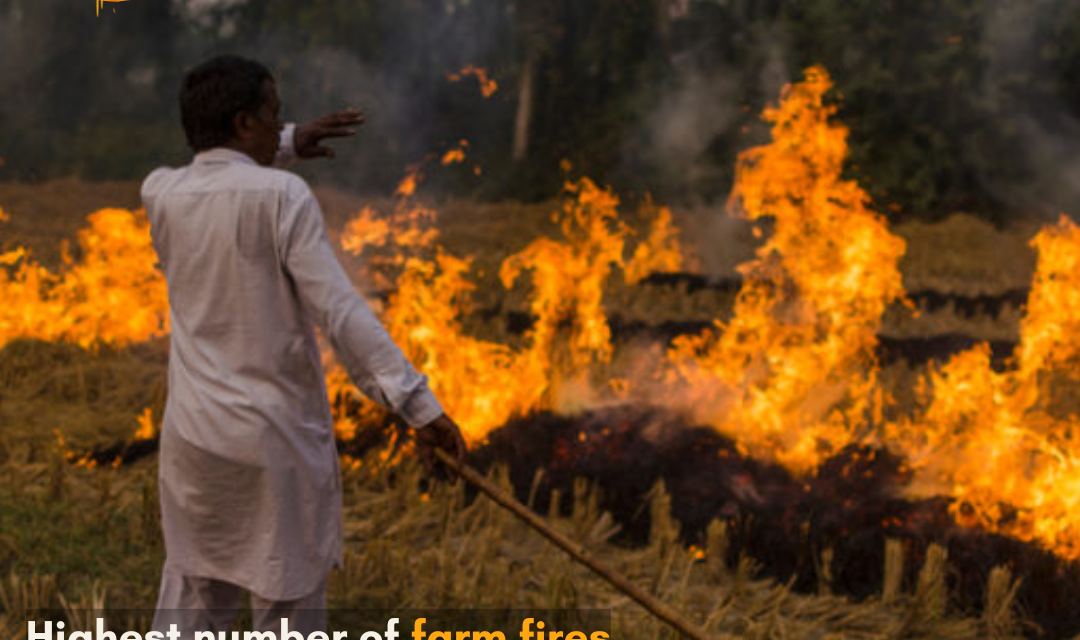Among paddy-growing states, Madhya Pradesh reports the maximum farm fires.
The light was turned back on farm fires when the air quality deteriorated to the higher end of the “severe” category in the National Capital Region (NCR) this week. Officials have now blamed a shift to paddy cultivation from mustard and soybean cultivation for the spike in the farm fires in Madhya Pradesh.
Maximum farm fires reported in Madhya Pradesh.
Madhya Pradesh, among paddy-growing states, reports the maximum number of farm fires 12,955 between September 15 and November 19, followed by Punjab (9,925), Uttar Pradesh (3,308), Rajasthan (2,269) and Haryana (1,153) as reported by the Indian Council of Agricultural Research. The number of farm fires in Madhya Pradesh was about 3,000 more than those during the same period last year. This made the officials blame a shift from paddy to mustard and soybean cultivation for the spike in farm fires and lack of awareness about alternative stubble disposal methods. Also, the air quality deterioration to the higher end of the “severe” category in the National Capital Region (NCR) brought back the spotlight on farm fires.
Farm fires in Punjab.
Smoke from farm fires in Punjab, which remained locked in place by slow winds and plunging temperatures, further deteriorated the air quality, prompting measures like work-from-home orders. The worsening air quality was mainly due to stubble emissions from Punjab and Haryana.
Officials said farmers cultivated paddy in place of mustard and soybean.
A Madhya Pradesh agriculture department official attributed the rise in farm fires to an increase in paddy sowing area to 36 lakh hectares in 2024 from 33.11 lakh hectares in 2023. The officials said that farmers cultivated paddy instead of mustard and soybean, saying, “In 2023, the production of paddy was 1378.25 LMT. This was expected to increase by at least 20% this year.” He further said that farmers in Madhya Pradesh were unaware of alternative disposal techniques for paddy stubble, pointing out, “There are not enough machines to convert stubble into fodder.”


 Bus catches fire, Jaisalmer: 20 passengers are killed in the tragedy
Bus catches fire, Jaisalmer: 20 passengers are killed in the tragedy  Father-in-law of a man kills him 3 months after the wedding
Father-in-law of a man kills him 3 months after the wedding  Mamata Banerjee clarifies her statement on West Bengal rape horror
Mamata Banerjee clarifies her statement on West Bengal rape horror  Pilots’ Body demands the ‘grounding of all Boeing 787 planes’ based on reports of malfunctioning
Pilots’ Body demands the ‘grounding of all Boeing 787 planes’ based on reports of malfunctioning  SunjayKapur’s inheritance case: PriyaKapur called ‘Cindrella’s stepmother’
SunjayKapur’s inheritance case: PriyaKapur called ‘Cindrella’s stepmother’  Special meals for ‘godman’ Saraswati inside jail
Special meals for ‘godman’ Saraswati inside jail